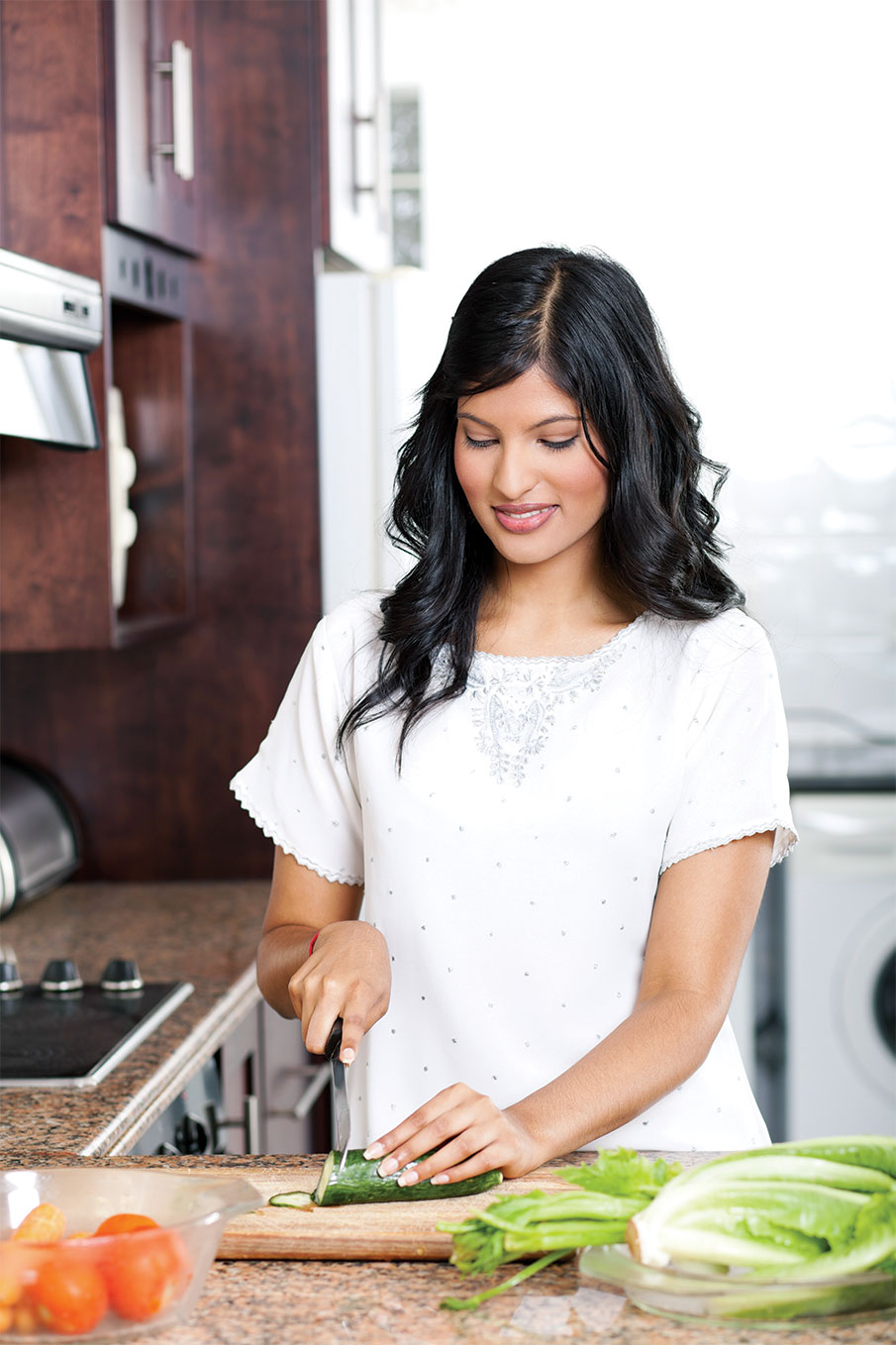
PLAN to be Healthy & Stress Free
- Home
- Live Well Blog
- PLAN to be Healthy & Stress Free
AMANDA HOJNACKI, BS
It’s 6:28 p.m.; your phone is ringing, the laundry needs folding, and the kids still need a bath… and then you hear it, “Mom, what’s for dinner?” This question can drive parents crazy! Luckily for you, you’ve planned ahead and proudly respond with, “grilled chicken with brown rice, steamed broccoli, and fresh fruit with yogurt parfaits.” Right? OK, maybe not.
You may be thinking, who has time to plan meals like this? Well, if you’ve got 15 minutes, you do!
Planning meals ahead of time can help parents save time, money, and avoid the stress that can come from “I’m hungry!” demands. Taking a few minutes to plan ahead can also help your family eat healthier and spend more time together.
Here’s how to PLAN for healthy, stress-free meals:

Pick your meals.
- Once a week, take 15 minutes to plan your meals for the next 7 days.
- Think about your family’s schedule for the week to help choose meals you will eat together as a family, and others that are quick and easy to grab and go for busier days.
- It can be helpful to have a list of your family’s favorite recipes on hand when deciding meals for the week. Having a recipe list can help your family eat a variety of healthy meals and avoid eating the same meals over and over again.
- Kids love to help! Ask your children to pick one meal they would like to eat during the week. Bonus — kids are more likely to try something new if they’re involved in the decision making!
- Don’t forget about leftovers. Extra grilled chicken from Monday night’s dinner can make for a great sandwich wrap for Tuesday’s lunch. Making the most out of your leftovers will help you cook less and waste less!
- When planning your meals, try to include foods from each food group: whole grains, fruits, veggies, lean protein and low-fat dairy.
List what you’ll need.
- Once you’ve planned out your meals, put together a shopping list with the ingredients you’ll need for the week.
- Organize your list based on your grocery store’s layout. What do you see when you first walk into the store? If it’s produce, you would place fruits and veggies at the top of your list. Organizing your list this way can help you avoid forgetting items you need or having to make a last minute dash across the store for something you already walked by.
- Check your pantry, freezer, and fridge to see what you already have to avoid buying things you don’t need.
Agree on a time and place.
- Sometimes busy schedules can make sharing family meals together a challenge. However, when you plan meals ahead of time, it can be easier for the whole family to eat together.
- Set a weekly schedule for family mealtimes. Hang a list, or write on the family calendar what meals you will be having, where they will be offered, and when. Knowing what day and time everyone is expected to be at the dinner table can help everyone plan ahead!
- And remember, family meals can be enjoyed together anytime of day – breakfast, lunch or dinner!

Never shop hungry.
- Before you shop, have a snack — you’ll be less likely to buy extra items not on your list.
- When you’re ready to head to the store, don’t forget to take your list! If a paper list seems to get lost or forgotten, try downloading a free “note” or “shopping list” app on your smartphone — or take a picture of the paper list with your phone.
The Real Meal Deal

- Be realistic. You may not be able to plan ahead for every meal, and that’s OK! Don’t be too hard on yourself. Plan ahead for the meals you can.
- Keep it simple. Dinner doesn’t need to be a fancy seven-course meal.
- Consider batch cooking. Double the recipe of soups or stews, freeze half, then just thaw, heat and serve.
- Have a backup plan. Let’s be honest, sometimes we just run out of time or that new recipe we tried turns out, well… terrible. If you end up burning the lasagna, or realize that pot roast is going to take way too much time to prepare, have something else on hand for a quick substitution. Canned tuna or chicken and rice or pasta are great pantry backups.


- Don’t give in to picky eating! If your children don’t want to eat something you’ve offered, that’s OK — kindly remind them that this is what’s being offered right now, and if they don’t want to eat it that’s fine. If your children demand certain foods or snacks between mealtimes, simply explain that it’s not time to eat right now and tell them when they can expect their next meal or snack.
- Ask for help during mealtimes. Children can help with things like setting the table, washing dishes, and wiping up crumbs.

“Together at the Table”
As parents, we do everything we can to keep our children safe, happy and healthy. When it comes to offering healthy meals and snacks, it’s not just about the foods we offer, but the time our family spends together that’s important. Family meals play a big part in children’s health, and they’re a great time for learning and family bonding. Sharing meals together at the table offers a time for families to relax, laugh and talk about their day.
Make an effort to eat together as a family… and have some fun when you do!
Letter Night. Help your children try new foods and learn the alphabet by offering a letter-themed food during meals. For example, on “A” night, you could offer asparagus, apples, or avocado.
What was the best part of your day?
Who did you talk to today? What did you talk about?
What are you looking forward to doing this week?
If you could be an animal, what would you be and why?
If you could have a superpower, what would it be?
Families eat better, together.